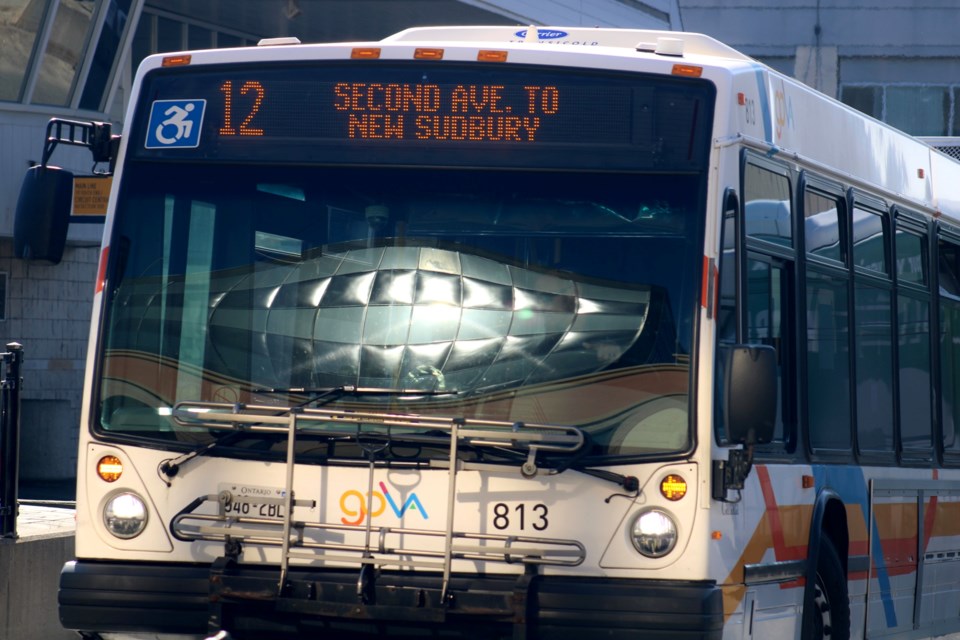Service level reductions have been proposed for GOVA Transit affecting service after 11 p.m. and a few seldom-used routes, for a total net cost savings of almost $1 million per year.
Conventional GOVA Transit service currently operates seven days per week, between 6 a.m. and 12 a.m., with all final trips departing the Downtown Transit Hub by midnight.
The proposed service level reduction would have the final bus depart downtown at 11 p.m. for an annual net cost savings of $736,000 when fully implemented. Approximately 80 people daily would be affected by this change (the city’s average system-wide ridership after 11 p.m.), and the change would reduce service by 10,800 transit hours annually.
The current total daily ridership for conventional transit is 14,000 passengers between Monday and Friday, and approximately 9,000 and 7,000 riders on Saturday and Sunday, respectively. The current service level includes 174,000 annual transit hours.
This proposed service level reduction to 11 p.m. is included alongside several business cases city administration tabled this week for city council consideration.
Although the business cases are on the Nov. 8 city council agenda, the only decision the current batch of elected officials is expected to make is whether they want the business cases forwarded to the new city council for consideration during next year’s budget deliberations.
“Where a business case has a tax levy impact, reviewing them now provides an opportunity for identifying other budget adjustments that could help offset such an impact,” a report by city administration clarifies.
“Anticipating such adjustments now, or over the next few months, provides committee members and staff with some time to analyze the adjustment and prepare appropriate budget amendment motions for consideration in February.”
Other proposed service level reductions to GOVA Transit include:
- Eliminate Route 22 and Route 23 for an annual net savings of $87,000. The two routes are intertwined using the same bus.
- Route 22 (Grandview Local) from the New Sudbury Shopping Centre via Lasalle, is a neighbourhood route that provides service north of Lasalle across Grandview, Woodbine, Holland and Roy. Weekday service is four trips per day, every two hours, from 8:35 a.m. to the last trip leaving the centre at 2:25 p.m. Weekend service adds two trips to 6:05 p.m. The average weekday daily ridership is three and the average weekend daily ridership is 10.
- Route 23 (New Sudbury Local) from the New Sudbury Shopping Centre via Lasalle and Falconbridge, is a neighbourhood route that provides service south of Lasalle across Westmount, Beatrice and Hawthorne. Weekday service is four trips per day, every two hours, from 9:35 a.m. to the last trip departing the centre at 3:35 p.m. Weekend service adds one trip to 6:05 p.m. Its average weekday daily ridership is 17 and the average weekend daily ridership is 40.
- Reducing transit service hours for the Downtown Transit Kiosk and Downtown Transit Hub would save the city approximately $76,000 per year when fully implemented in 2024. The Downtown Transit Kiosk, which is currently open for 12 hours per day beginning at 7:45 a.m. Monday to Friday and from 9 a.m. to 4 p.m. on weekends, would be open for eight hours per day Monday to Saturday. The Downtown Transit Hub, which is currently open from 6 a.m. to 12 a.m., would close at 10 p.m.
- Eliminate Route 4, which would affect the Laurentian University and Health Sciences North area. This route services LU via Elgin, Paris and through Health Sciences North with six trips in the morning from 7:15 a.m. and 9:45 a.m., and nine trips in the afternoon between 1:45 p.m. and 5:45 p.m. The route operates seven months of the year, and is eliminated between April and September. The current average daily ridership is 225, which the city anticipates shifting to the similar Route 3.
Although these service-level reductions align with goals outlined in some city planning documents, administration cautions the elimination and reduction of routes does not align with Goal 7 of the Community Energy and Emissions Plan, which is to “enhance transit service to increase transit mode share to 25 per cent by 2050.”
The GOVA Transit service level changes join a handful of other reductions and operational changes proposed by city administration, which total a net savings of approximately $1.35 million in 2023 and almost $2 million in 2024.
The service level cuts are part of an ongoing effort to meet city council’s desired 2023 tax increase of 3.7 per cent, in keeping with the city’s long-term financial plan (which assumes an assessment growth of one per cent).
To achieve this goal, city administration has been tasked with cutting $17.7 million in operational expenses.
Working against this goal will be $7.78 million in business cases for service level increases tabled by city council and administration whose validity will also be considered during the Nov. 8 city council meeting.
The Nov. 8 city council meeting will begin at 6 p.m. and can be attended in-person at Tom Davies Square or accessed via livestream by clicking here. The meeting’s full agenda and its associated reports can be found by clicking here.
Tyler Clarke covers city hall and political affairs for Sudbury.com.
